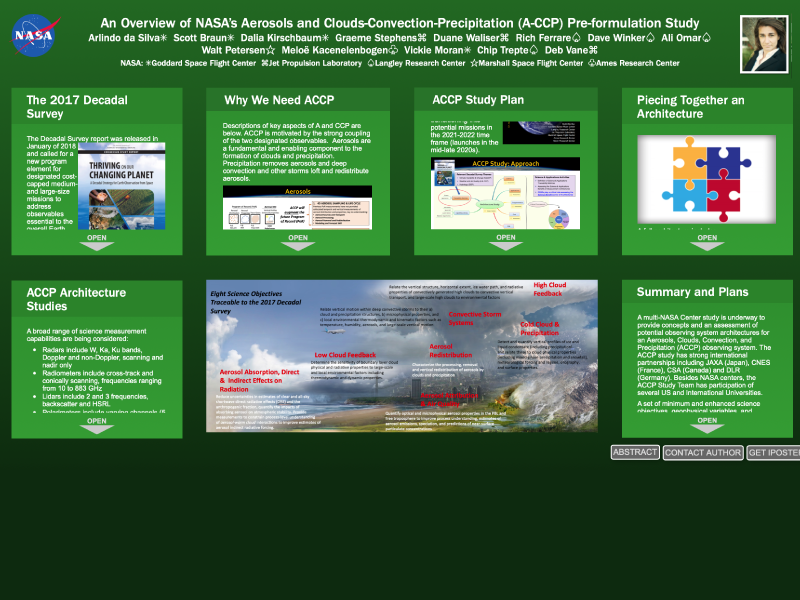Documents

An Overview of NASA’s A-CCP Pre-formulation Study
Source: AGU
[27-Jun-2019] The 2017 Decadal Survey (DS) highlighted Earth System Science themes, science and application questions, and several high priority objectives that have led to the inclusion of Aerosols (A) and Clouds-Convection-Precipitation (CCP) as Designated Observables (DOs). On July 17, 2018, several NASA centers (GSFC, LaRC, JPL, MSFC, GRC and ARC) submitted a joint Study Plan to the NASA Earth Science Division for the Aerosol (A) and Cloud, Convection, and Precipitation (CCP) Pre-formulation Study (A-CCP). The DS and the A-CCP team recognized the science merit in combining the A and CCP DOs for both enhancing the ability to address a number of science objectives and also to provide an expanded capability to address additional objectives beyond those addressed by individual DOs.
A critical element of the A-CCP observing strategy is to make extensive use of new passive and active sensors as well as of the so-called Program-of-Record (PoR), complemented by a fully integrated suborbital component. Central to this observing system design is the adoption of a Value Framework in which quantitative assessment of the science benefits of space- and air-borne assets is a key element. Given pre-defined A-CCP science objectives and geophysical variables with desired accuracies, A-CCP relies on a spectrum of Observing System Simulation Experiments (OSSEs) aimed at addressing pixel level retrieval uncertainties and sampling trade-offs.
In this poster the authors present an overview of the ACCP study. Starting with its roots at the 2017 Decadal Survey, we will outline the main goals and science objectives of ACCP, followed by a brief description of the study approach, value framework and architectures being considered. We will then highlight OSSEs activities being conducted, namely, synergistic retrievals involving passive/active sensors of particular relevance for the A-CCP science objectives and the key architectures being considered. 